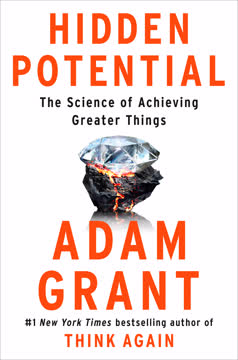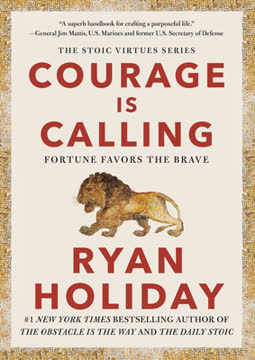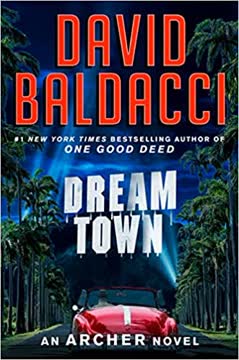Key Takeaways
1. Email remains the dominant digital communication channel
According to market research firm The Radicati Group, in 2015 there were over 205 billion emails sent and received daily worldwide—about seven million emails zipping around the digital superhighway that is the Internet in the time it took you to read this sentence.
Ubiquitous communication tool. Despite the rise of social media and messaging apps, email continues to be the most widely used form of digital communication. Its prevalence spans across personal, consumer, and business contexts. The sheer volume of daily email exchanges underscores its importance in modern communication.
Preferred business medium. Email is particularly favored in professional settings. Studies show that 86% of professionals prefer email for business communication, and millennials expect it to remain their primary work communication method for the foreseeable future. This preference stems from email's formal nature, ability to document conversations, and ease of organizing and referencing information.
Marketing powerhouse. Email marketing has proven to be highly effective, with some reports indicating a return on investment (ROI) of 4400% or $44 for every $1 spent. This makes it a critical tool for businesses to reach and engage their audience, promote products or services, and nurture customer relationships.
2. Crafting effective subject lines and "From" lines is crucial
68 percent of Americans say they base their decision to open an email on the "From" name.
First impression matters. The "From" line and subject line are the first things recipients see, acting as the gateway to your email content. They play a pivotal role in determining whether an email gets opened or ignored.
"From" line importance. The sender's name or company name in the "From" line builds trust and recognition. It should be consistent and clearly identify the sender to avoid confusion or suspicion.
Subject line optimization. Effective subject lines are:
- Concise (ideally 40-50 characters)
- Clear and descriptive
- Personalized when possible
- Avoiding spam trigger words
- Creating a sense of urgency or curiosity
A/B testing subject lines can significantly improve open rates, with some tests showing up to 25% higher engagement for winning variations.
3. Personalization and segmentation boost email engagement
Personalized subject lines provided a lift in open rates of as much as 41.8 percent.
Beyond name insertion. While using the recipient's name is a start, true personalization goes deeper. It involves tailoring content, offers, and timing based on the recipient's preferences, behavior, and demographics.
Segmentation strategies. Dividing your email list into smaller, more targeted groups allows for more relevant messaging. Common segmentation criteria include:
- Demographics (age, location, gender)
- Past purchase behavior
- Engagement level with previous emails
- Position in the sales funnel
- Interests and preferences
Data-driven approach. Leveraging customer data and analytics enables more sophisticated personalization and segmentation. This approach leads to higher open rates, click-through rates, and ultimately, conversions.
4. Content marketing enhances email effectiveness
According to FierceCMO (10/3/2016), a poll of more than four thousand Forbes readers found that branded content was 9 percent more effective than paid advertising at getting consumers to consider buying a particular brand.
Value-driven communication. Content marketing in emails focuses on providing valuable, relevant information to recipients rather than just promotional messages. This approach builds trust, establishes authority, and keeps subscribers engaged.
Types of content. Effective email content can include:
- How-to guides and tutorials
- Industry news and trends
- Case studies and success stories
- Exclusive insights or research
- Answers to frequently asked questions
Lead magnets. Offering free, high-value content (e-books, whitepapers, webinars) in exchange for contact information or further engagement can significantly boost email list growth and subscriber engagement.
5. Automation streamlines email marketing processes
An autoresponder is software or a service that automatically sends out either a prewritten single email or a sequence of emails on a preselected date or at a time.
Efficiency and consistency. Email automation allows marketers to set up triggered emails based on specific actions or timeframes. This ensures timely, relevant communication without manual intervention for each message.
Common automated sequences:
- Welcome series for new subscribers
- Abandoned cart reminders
- Post-purchase follow-ups
- Re-engagement campaigns for inactive subscribers
- Drip campaigns for nurturing leads
Personalization at scale. Automation combined with data integration enables personalized messaging at a large scale, improving the recipient experience while saving time and resources for marketers.
6. Mobile optimization is essential for email success
According to Litmus.com's latest report, The 2017 State of Email Report, the market share of emails opened on mobile phones was at 54 percent, higher than Desktop (16 percent), and Webmail (30 percent).
Mobile-first design. With over half of emails being opened on mobile devices, it's crucial to design emails with mobile users in mind. This includes:
- Single-column layouts
- Large, easily tappable buttons
- Concise content
- Responsive design that adapts to different screen sizes
Font and image considerations:
- Use sans-serif fonts for better readability on small screens
- Opt for a font size of 14pt for body text and 22pt for headlines
- Limit image use and ensure they're optimized for quick loading
Testing across devices. Regular testing on various devices and email clients ensures your emails display correctly for all recipients, maintaining a professional appearance and functionality.
7. Multichannel integration amplifies email marketing impact
Email, at its best, is the glue that can tie together nearly every part of a multichannel marketing system, so that tracking from one touchpoint to the next is more effective, regardless of how nonlinear the customer pathway may be.
Coordinated messaging. Integrating email with other marketing channels (social media, direct mail, paid advertising) creates a cohesive brand experience and reinforces messaging across touchpoints.
Cross-channel customer journey. Email can guide customers through different stages of engagement, from initial awareness (via a lead magnet) to post-purchase follow-up and loyalty programs.
Data synchronization. Integrating data from various channels provides a more complete view of customer behavior and preferences, enabling more targeted and effective email marketing strategies.
Multichannel campaign examples:
- Using email to drive social media engagement
- Following up on direct mail campaigns with targeted emails
- Sending personalized emails based on website browsing behavior
- Coordinating email content with ongoing paid advertising campaigns
Last updated:
FAQ
1. What’s The New Email Revolution by Robert W. Bly about?
- Comprehensive email communication guide: The book covers writing effective emails for personal, business, and marketing purposes, from basic mechanics to advanced strategies.
- Covers technical and legal aspects: It explains email anatomy, CAN-SPAM compliance, design options, deliverability, and integration with other marketing channels.
- Practical tools and templates: Readers get model emails, legal checklists, design tips, and marketing fundamentals to improve their email results.
2. Why should I read The New Email Revolution by Robert W. Bly?
- Expert insights from a veteran: Robert W. Bly is a renowned copywriter with decades of experience, sharing proven strategies and real-world examples.
- Email’s enduring power: The book demonstrates why email remains the most widely used and effective digital communication tool, despite the rise of social media.
- Boost results and avoid pitfalls: Learn to write emails people want to read, increase engagement, and avoid legal and deliverability issues.
3. What are the key takeaways from The New Email Revolution by Robert W. Bly?
- Master email fundamentals: Understand the importance of subject lines, sender reputation, concise writing, and clear calls to action.
- Legal and technical compliance: Learn how to comply with CAN-SPAM laws, avoid spam filters, and ensure high deliverability.
- Effective marketing strategies: Discover how to use segmentation, automation, and multichannel integration to maximize email marketing ROI.
4. What are the most important components of an effective email according to Robert W. Bly?
- From and subject lines: These are critical for open rates; recognizable senders and curiosity-driven subjects increase engagement.
- Clear structure and concise body: Use a logical flow—headline, lead, main copy, bullets, CTA, close, signature, and P.S.—to keep emails readable and actionable.
- Strong calls to action: Place visually distinct CTAs and hyperlinks to guide readers toward desired actions.
5. How does Robert W. Bly recommend writing and formatting emails for maximum impact?
- Keep it concise and clear: Aim for 50–125 words for most emails, using simple language and short sentences at a seventh-grade reading level.
- Use bullet points and structure: Organize information for easy scanning and comprehension, especially in marketing emails.
- Personalize and segment: Tailor messages to recipient profiles and behaviors for higher relevance and response rates.
6. What does The New Email Revolution by Robert W. Bly say about CAN-SPAM compliance and legal requirements?
- Truthful and transparent: Use accurate headers, sender information, and subject lines to comply with the law.
- Easy opt-out: Always include clear unsubscribe links and honor opt-out requests promptly.
- Avoid spammy practices: Don’t harvest addresses or send unsolicited emails; violations can result in hefty fines and damage your reputation.
7. What are the main barriers to email deliverability and how does Robert W. Bly suggest overcoming them?
- Sender reputation is key: Most undelivered emails are due to poor sender reputation, often from spam complaints or high bounce rates.
- Engagement matters: Regularly clean your list of inactive subscribers and encourage recipients to whitelist your address.
- Technical best practices: Use proper HTML, set up SPF and reverse DNS, avoid spam trigger words, and test emails across platforms.
8. How does Robert W. Bly differentiate between text emails, HTML emails, and text in an HTML shell?
- Text emails: Simple, personal, and highly deliverable, but limited in formatting and tracking.
- HTML emails: Visually appealing with images and design, but risk being flagged as spam and may not display well everywhere.
- Text in an HTML shell: Combines the readability of text with HTML’s formatting and tracking, offering a balanced approach.
9. What advice does The New Email Revolution give on using video and rich media in email marketing?
- Boosts engagement: Video emails can increase engagement by 44% and nearly double click-through rates.
- Keep videos short: Two minutes or less is ideal; longer videos should be linked to from the email.
- Use third-party hosting: Host videos on platforms like YouTube or Vimeo, embed with fallback images, and include clear CTAs.
10. How does Robert W. Bly recommend using autoresponders and automation in email marketing?
- Automated sequences: Autoresponders send prewritten emails based on user actions or time intervals, increasing sales by 10–30% or more.
- Versatile applications: Use for welcome messages, abandoned cart reminders, confirmations, feedback requests, and drip campaigns.
- List management: Autoresponders help segment lists, manage subscribers, and support double opt-in for compliance and quality.
11. What are Robert W. Bly’s best practices for designing emails for different devices and ensuring mobile compatibility?
- Mobile-first design: Use single-column layouts (320–480 pixels wide), large fonts, and easy-to-tap CTA buttons for mobile users.
- Responsive coding: Employ CSS media queries and HTML for adaptable layouts that render well across devices and email clients.
- Minimal, relevant images: Use images sparingly, include alt-text, and ensure they support the message for recipients who block images.
12. What are the best quotes from The New Email Revolution by Robert W. Bly and what do they mean?
- James Thurber: “Precision of communication is important…”—emphasizes the need for clarity and accuracy to avoid misunderstandings in email.
- Mark Twain: “The difference between the right word and the almost right word…”—highlights the power of precise language in effective email writing.
- Suzy Kassem: “Originality is the key to being memorable.”—reminds readers that unique subject lines and content help emails stand out and avoid spam filters.
Review Summary
The New Email Revolution receives mixed reviews, with an average rating of 3 out of 5. Some readers find it valuable for email marketing strategies, praising its tips and examples. Others criticize it as outdated or too basic for experienced marketers. Positive reviews highlight its practical advice and relevance to modern business communication. Negative reviews suggest it lacks depth for professionals. Overall, the book seems most beneficial for beginners in email marketing, offering fundamental concepts and techniques for optimizing email use in business contexts.
Similar Books










Download PDF
Download EPUB
.epub digital book format is ideal for reading ebooks on phones, tablets, and e-readers.











